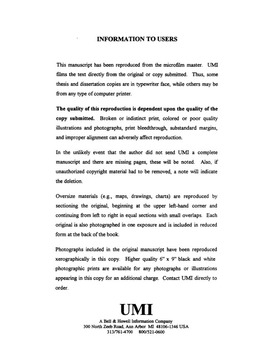| dc.contributor.advisor | Everett, Jess, | en_US |
| dc.contributor.author | Kennedy, Lonnie George. | en_US |
| dc.date.accessioned | 2013-08-16T12:30:09Z | |
| dc.date.available | 2013-08-16T12:30:09Z | |
| dc.date.issued | 1998 | en_US |
| dc.identifier.uri | https://hdl.handle.net/11244/5685 | |
| dc.description.abstract | This research emphasizes microbial/mineral interactions associated with Fe$\sp{3+}$ and SO$\sb4\sp{2-}$ reduction. Simplified methods are developed to evaluate Fe$\sp{3+}, $ Fe$\sp{2+}, $ and S mineral species. These techniques allow an approximation of biologically available Fe$\sp{3+}$ minerals and permit analysis of Fe$\sp{2+}$ and reduced S minerals deposited as a result of microbial processes. Methods developed herein were applied to three test sites contaminated with gasoline, landfill leachate, and natural methane gas. At these sites, the effects of Fe$\sp{3+}$ and SO$\sb4\sp{2-}$ reduction could be distinguished based on mineral analysis. Evaluation methods were also developed especially with respect to understanding Fe data. | en_US |
| dc.description.abstract | Fe and S mineral analysis was used in conjunction with a typical natural attenuation study, where only aqueous water analyses are used, at a gasoline spill site. It was found that most of the measurable expressed capacity was present as either solid mineral Fe$\sp{2+}$ or reduced S species. Measurable expressed capacity showed that greater than 92% of the original hydrocarbon was destroyed by microbial processes. Methods were developed to incorporate mineral analysis into a natural attenuation study. | en_US |
| dc.description.abstract | Fe and S processes were examined under laboratory conditions in microcosms. Microcosms were developed with two different types of native sands containing varying amounts of natural Fe$\sp{3+}$ minerals. To some systems, mineral sources of Fe$\sp{3+}$ and SO$\sb4\sp{2-}$ were added in the form of Fe(OH)$\sb3$ and gypsum $\rm(CaSO\sb4{\cdot}2H\sb2O).$ Some microcosms were prepared with no mineral amenities other than those found naturally in the native sediments. A synthetic leachate consisting of straight chain fatty acids was added as a carbon source. The major observations were that: (1) simulated leachate organic was removed from all systems at about the same rate ($\sim$0.35 mMol C/week); (2) solid Fe$\sp{3+}$ and SO$\sb4\sp{2-}$ sources can serve as electron acceptor sources; (3) SO$\sb4\sp{2-}$ reduction resulted in the formation of iron sulfides and H$\sb2$S; (4) the ability to form iron sulfide is limited and is apparently a function of Fe$\sp{3+}$; (5) SO$\sb4\sp{2-}$ reduction inhibits methanogenesis; (6) Fe$\sp{3+}$ reduction only partially inhibits methanogenesis; (7) Fe$\sp{3+}$ reduction greatly reduces CO$\sb2$; (8) natural Fe$\sp{3+}$ minerals did not inhibit methanogenesis or CO$\sb2$; (9) Natural Fe$\sp{3+}$ minerals were poor short term sources of Fe$\sp{3+}$; (10) aqueous Fe$\sp{2+}$ poorly represents Fe$\sp{3+}$ reduction processes; and (11) the utilization of native Fe$\sp{3+}$ minerals and gypsum SO$\sb4\sp{2-}$ followed a first order kinetic model. This research has several potential applications to natural attenuation scientific and engineering wastewater treatment applications which are discussed. | en_US |
| dc.format.extent | xviii, 268 leaves : | en_US |
| dc.subject | Groundwater Purification. | en_US |
| dc.subject | Environmental Sciences. | en_US |
| dc.subject | Engineering, Sanitary and Municipal. | en_US |
| dc.subject | Biogeochemistry. | en_US |
| dc.subject | Bioremediation. | en_US |
| dc.subject | Geochemistry. | en_US |
| dc.subject | Organic compounds Biodegradation. | en_US |
| dc.subject | Engineering, Environmental. | en_US |
| dc.title | Iron and sulfur microbial processes applied to the biodegradation of organic contaminants in groundwater. | en_US |
| dc.type | Thesis | en_US |
| dc.thesis.degree | Ph.D. | en_US |
| dc.thesis.degreeDiscipline | School of Civil Engineering and Environmental Science | en_US |
| dc.note | Major Adviser: Jess Everett. | en_US |
| dc.note | Source: Dissertation Abstracts International, Volume: 59-07, Section: B, page: 3297. | en_US |
| ou.identifier | (UMI)AAI9839819 | en_US |
| ou.group | College of Engineering::School of Civil Engineering and Environmental Science | |
